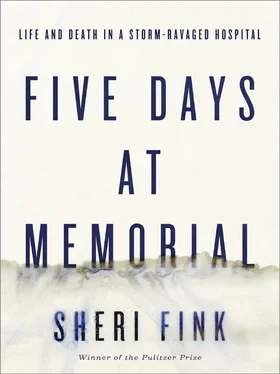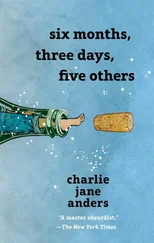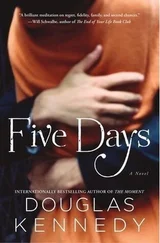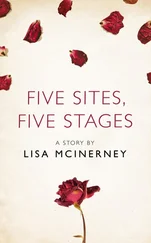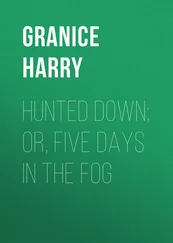One warm day in the late 1970s, Pou attended a party that spilled across the grounds of a restored plantation house a half hour’s drive across Lake Pontchartrain from the city. The attendees were college-age kids and twentysomethings—the “uptown group” as they referred to themselves—private-school and Catholic-school graduates who had been raised, like Pou, in the graceful homes on the city’s western curve along the Mississippi.
The cool waters of a long swimming pool beckoned. One young man challenged another. Who could swim the farthest without coming up for air? They took sips of their gin and dove in.
The two thrashed out one long lap. In the middle of the return lap, the challenger surfaced. His competitor trounced him, swimming to the end of the lane, then rubbing it in by floating in place without lifting his head.
A friend jumped in and playfully shoved the macho victor underwater. He stayed down. It took a while before everyone realized he was no longer holding his breath. He wasn’t playing a game. He was unconscious, drowning in the shallow water.
Someone hauled him out of the pool. His skin looked grayish. There was no doctor at the party. They were all just kids, most of them drunk and some of them stoned. There was a veterinary student, but it was someone else who reacted.
Anna Pou rushed to the young man’s side, rolled him over, and bent to his lips. She blew breaths into his mouth and quickly revived him. Pou suggested he go to a hospital. He considered her advice, grabbed another gin, and went to play volleyball.
Friends remarked on how quickly Pou had taken control of the situation. A few years later, she realized her father had been right. Being a laboratory technologist didn’t fulfill her. She applied and was accepted to medical school at Louisiana State University, where her father and uncle had also trained. She was thirty years old.
One night during medical school, Pou attended an outdoor pig roast hosted by medical residents. She met one of their friends, a tall, handsome pharmacist who flew his own single-engine Cessna propeller plane. They made a beautiful couple, with personalities as different as their heights. Pou was outgoing, dramatic, and testy at times. She worked and played with gusto. Vince Panepinto was smart and engaging but more reserved. It took a few drinks before he felt ready to join her on the dance floor.
Over the next few years of their relationship, Pou’s career took precedence. Panepinto followed her around the country as she did a surgery internship in Memphis and then studied otolaryngology, the “ear, nose, and throat” specialty, at a tough, exacting residency program in Pittsburgh. During her last year there, one of her brothers, five years her senior, died of lung cancer. He was only forty-three. The way the cancer attacked him was horrific. Pou said she was haunted by the way he “lingered.”
While he was sick, Pou applied to yet another training program so she could subspecialize in surgery for head and neck cancers. She was accepted at a hospital in Indiana. This meant another relocation, and this time her husband Panepinto didn’t join her. He moved back to New Orleans to await the end of her training.
If Pou was on a quest to do good in the world, she was taking it to an extreme. Many otolaryngologists had satisfying careers treating routine earaches and sinus infections. The field had a reputation among doctors as being one of the few surgical specialties to offer a reasonable work-life balance. What Pou trained to do in Indiana was at the most arduous end of the specialty spectrum. Microvascular reconstructive surgery was a mix of plastic surgery and cancer surgery. It was physically grueling and technically demanding. Some operations lasted an entire day and through the night.
The goal was often to restore the ability to speak, swallow, and breathe in patients with tumors or injuries of the tongue, throat, larynx, and other parts of the head and neck. Pou learned to repair disfiguring defects by repurposing other tissues from the body. A rarely used thigh muscle could do the work of a tongue. A flap of skin from the forearm filled in for missing facial skin. A bit of leg or hipbone served to rebuild a jaw. Under a microscope, she sewed tiny blood vessels and nerves together to keep the tissues alive and restore function.
In the academic medical world Pou had entered, fully trained surgeons—the “attendings”—ruled the operating theaters. The younger resident doctors, medical students, and nurses ranked below them and were expected to follow orders. Coming from a big family, Pou knew how to get along with people, but her respect for hierarchy had its limits. She turned on the Southern charm, manners, and deference with attendings who were good to their patients. Some of these doctors became beloved mentors. Others, whom she judged to care more about their careers than their patients, earned her distrust and irreverence.
When Pou finally finished her training in 1997, she was forty-one. She had not had children along the way. There had been many factors to consider, from her demanding career path to the fact that she had many nieces and nephews to dote on. She had also seen how hard her mother had worked to raise her own children. These included a banker, a nurse, and a real-estate broker. They had, on many occasions, made Jeanette Pou proud and happy. Three of the Pou girls had paired up with men whose names bespoke Italian heritage—a Panepinto, a Perino, and a Pappalardo—no doubt delighting their Sicilian-American mother. But Anna Maria had also seen how children can break a mother’s heart. Three of her siblings had died, one was diagnosed with a serious illness, and her oldest living brother was a federal fugitive indicted for drug trafficking who had gone on the lam in Mexico. A dedicated, loving mother, Jeanette Pou had steered her family through these crises. Anna Pou directed a great deal of her own dedication and love toward her patients. Both women brought a toughness and tenacity to their callings. Others in the family referred to them as “the steel magnolias.”
Pou finished her training, and she and Panepinto selected Galveston as their new home. Pou had received a job offer there from the University of Texas Medical Branch. She worked at the only large hospital on the island of Galveston. The hospital had existed for more than a century, and about a quarter of all Texas-trained doctors had studied there. As with many teaching hospitals, something of a trade was involved. The patients, often poor, received care regardless of their ability to pay. In exchange, budding doctors learned their craft by practicing on them. The hospital served a prison population as well. It seemed like a good fit for Pou, who enjoyed teaching and had a passion for treating the poor, as her father had done.
The year after Pou was hired, the hospital began to ration care for people who couldn’t afford to pay for it. UTMB faced an $80 million budget deficit and declining state support. Just over a quarter of its patients were uninsured, and many others had inadequate coverage. Now each one was financially screened and charged an entry fee before being allowed to see a doctor. Those who couldn’t pay, or who already owed the hospital money, could be turned away. Exceptions were made for children and patients in emergencies, as required by law. Nearly everyone else was at the mercy of a committee of doctors and administrators tasked with choosing who would and who wouldn’t get care. Committee members were allotted $25,000 each month and had to decide which impecunious patients would receive drugs, surgeries, or other treatments, much as Louis Bristow, decades earlier at Southern Baptist Hospital, had decided which of his supplicants would receive charity care.
The complex cancer surgeries Pou had spent years learning to perform were expensive. Each patient’s recovery relied on far more than her own skills and efforts. A team of professionals from more than a half dozen other medical disciplines, from radiation therapy to rehabilitation, often needed to be involved. Finding the resources to care for these patients when they lacked health insurance was difficult. Pou vented about her predicament in phone calls with friends. “This is the worst!” she’d begin, pouring her frustration into entertaining tales of woe. “I’ve never had a day like this!” Friends could never be sure which was the truly worst day of Pou’s life. Those less fond of her found her overdramatic and hyperbolic—too quick to blame others when something went wrong with a patient, as in Dr. So-and-So didn’t care enough or didn’t do a good enough job. Small problems turned into bigger problems. Pou was not always willing to step back and allow other specialists to do their work, and some of them viewed her as controlling.
Читать дальше
